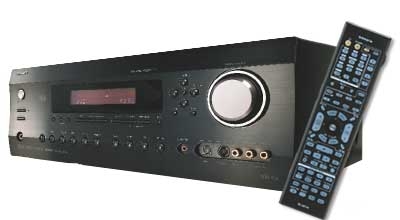Shootout: Three Mid-Price A/V Receivers Page 4

Integra DTR-7.6
| The Short Form |
| $1,400 / 17.1 x 6.8 x 16.9 IN / 28.9 LBS / integrahometheater.com / 800-225-1946 |
| Plus |
| •Simple, straightforward remote and menu layout •Easy on-the-fly speaker-level adjustments |
| Minus |
| •No analog-HDMI video conversion •No scaling of video |
| Key Features |
| •105 watts x 7 channels •THX Select 2-certified •2 HDMI inputs •Video upconversion to S-video, component-video outputs •Auto-speaker calibration and auto-EQ •XM Satellite Radio-ready •2-zone multizone capability •Back-surround speaker channels reassignable to Zone 2 •Backlit learning remote with macros |
| Test Bench |
| The Integra DTR-7.6 was excellent on most of our technical tests, although prolonged power tests with all channels driven provoked a temporary shutdown at roughly half of full power output. This test puts far greater demands on the receiver than real-world use, and I encountered no problems with actual program material. Despite an owner's manual statement to the contrary, the receiver does perform digital bass management on incoming analog-multichannel signals. Full Lab Results |
Like the other two receivers, the Integra includes an auto-equalization routine, and here, too, the results were surprisingly usable. (In general, these things are improving with each new generation of computing power.) Nonetheless, in my system, at least, "EQ-Off" still sounded the most transparent - though with lesser speakers (and other room acoustics), your own mileage might vary.
Unlike the rival AVR-3806 and RX-V2600, the DTR-7.6 doesn't convert composite video, S-video, or component video to HDMI, which necessitates making both component and HDMI links to your HDTV and switching the TV's input accordingly to accommodate both types of sources. And even though the Integra does convert from S-video or composite to component, there's no scaling at work here, so the 480i signal you'll typically get from a VCR or non-progressive-scan DVD player remains at 480i. Note, also, that the Integra's onscreen displays are not visible via the HDMI output - only by the component video or lesser outputs - which is another reason you'll have to run component to your TV alongside HDMI, and another potential source of annoyance when you have to switch your TV input.
- Log in or register to post comments




















































